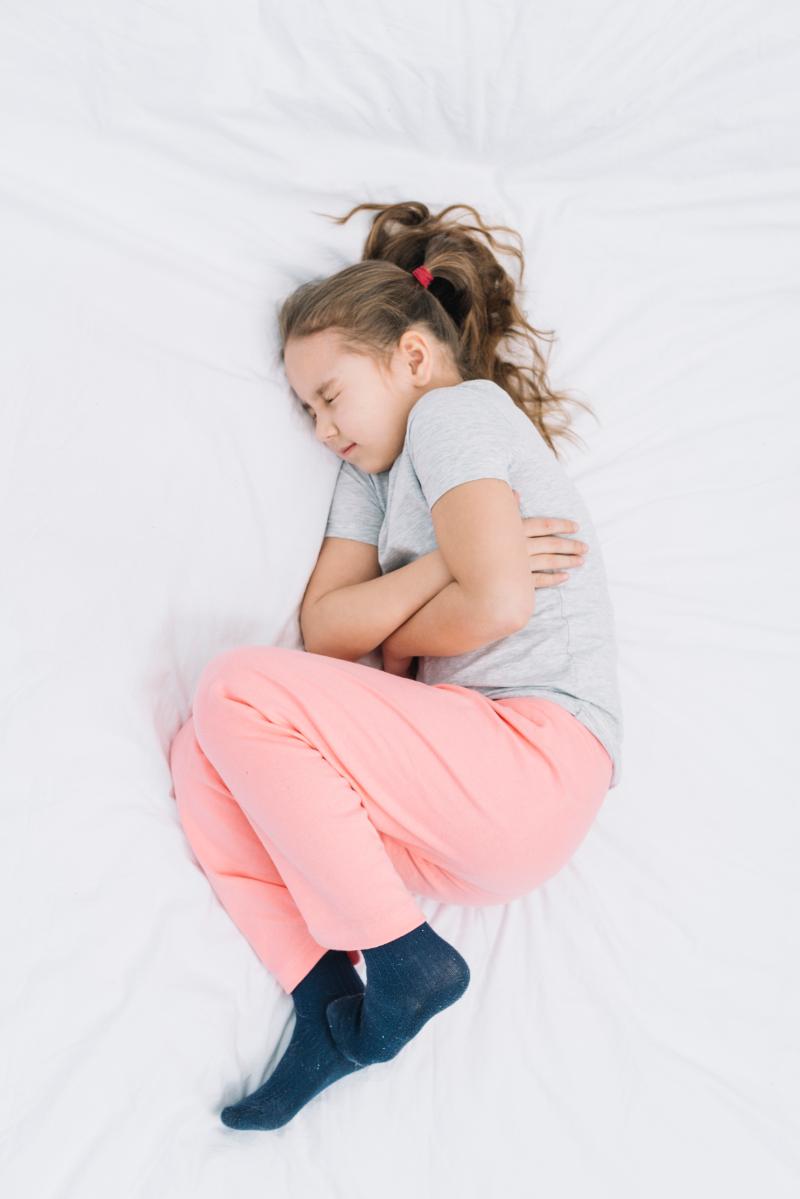Gastroenteritis, often called stomach flu, is a common childhood illness that causes nausea, vomiting, diarrhea, and abdominal cramps. It typically appears after having contact with an infected person or contaminated food.
Children who attend daycare are more likely to get in touch with the virus as they often share toys, food, or utensils with other kids.
Since there is no specific treatment for stomach flu, it is essential for parents to consistently encourage good hygiene practices, both before eating and after using the restroom.
Typically, stomach flu symptoms persist for a few days and can be effectively managed at home by ensuring the child gets plenty of rest and stays well-hydrated.
Gastroenteritis, or stomach flu, occurs when harmful germs infect the intestines or stomach, resulting in inflammation and pain. These germs are highly contagious and can spread through various means.
Your child can contract stomach flu by:
- Touching a contaminated surface and then touching their food or mouth
- Sharing food or beverages with an infected person
- Living with someone who is infected, even if they show no evident symptoms
Some viruses that can cause stomach flu include:
- Norovirus: This virus is the most common cause of foodborne illness worldwide. It is commonly spread among children in daycare centers.
- Rotavirus: This virus is the most common cause of gastroenteritis in children. Since children often put their fingers or other objects into their mouths, it becomes easier for them to become infected.
While it’s often called “stomach flu,” gastroenteritis is different from influenza. The flu primarily affects your respiratory system, including your nose, throat, and lungs.
Gastroenteritis, on the other hand, targets the intestines and stomach, causing symptoms such as:
- Watery diarrhea without blood
- Nausea, dizziness, and vomiting
- Abdominal cramps and pain
- Headaches and mild muscle aches
- Mild fever
These symptoms may appear within one to three days after becoming infected and usually resolve after a few days. In some severe cases, they can persist for up to 14 days.
Your doctor will likely be able to know if your child has stomach flu using a symptom checklist. Tests may be needed in case your child has intense pain or bloody stools.
In most cases, stomach flu does not require specific treatment and can be easily managed at home. The most important thing is to avoid dehydration by encouraging your child to drink plenty of fluids and oral solutions like Pedialyte.
If your child has stomach flu, try these steps to assist in their recovery:
- Allow them to stay home from school and let them get plenty of rest.
- Encourage them to stay hydrated by offering popsicles and water.
- Try offering your baby smaller, more frequent breastfeeding sessions.
- If your baby is on formula, try offering them small sips of water in between feeds.
- Don’t insist on eating if they don’t feel like it.
- Start with small amounts of bland, solid food and gradually increase quantities.
- Use over-the-counter painkillers like Tylenol if suitable.
- Ensure your child avoids contact with others until they have fully recovered.
If your kid has stomach flu:
- Do not offer them fruit juice or fizzy drinks since these could make the diarrhea worse
- Do not offer them junk/fast food that contains excessive amounts of dairy, sugar, or fats.
- Do not make baby formula weaker
- Do not give children medicine to stop diarrhea
- Do not give aspirin to children under 16 since it could develop a fatal condition called Reye’s syndrome.
In most cases, you can safely manage your child’s stomach flu at home. However, it is essential to watch for signs of dehydration since they can occur quickly in infants.
Symptoms may include fatigue, irritability, thirst, paleness, sunken eyes, reduced urination, dry mouth, and crying without tears.
Call your Pediatrician if your child has:
- A fever of 102o F (38.9o C) or higher
- A lot of discomfort or pain
- Bloody diarrhea or stool with mucus
Call your pediatrician if your baby has:
- Frequent vomiting
- No wet diapers in six hours
- Bloody stools or severe diarrhea
- A sunken soft spot on the top of their head
- Unusually sleepy behavior or unresponsive
The virus that infects the stomach and intestines can survive on surfaces such as doorknobs, toys, and hard surfaces. If your child gets infected with the stomach flu, it's best to thoroughly clean and disinfect any areas they come into contact with.
Also, keep your child away from any areas where food is being prepared since it could quickly become infected.
To prevent stomach flu from entering your house, try the following:
- Encourage everyone in your family to wash their hands with soap and water before eating and after using the bathroom.
- Make sure to follow proper handling and disposal of dirty diapers.
- If your child attends daycare, ensure they don’t share food or utensils with other children.


